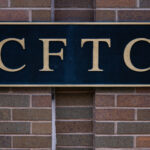As the Fourth of July approaches, emergency departments across the country are already beginning to treat patients injured by fireworks. According to the Consumer Product Safety Commission, hand and finger damage are the most common injuries caused by fireworks and account for 32 percent of all injuries reported.
And that can have huge financial, social, and social media implications.
“Lately it seems people care more about material things and their ability to social network than they do about their own health,” said Thomas Esposito, MD, MPH, chief of the Division of Trauma, Surgical Critical Care and Burns in the Department of Surgery at Loyola University Medical Center. “Staging an awesome pyrotechnical display for your friends on YouTube may result in blowing off your thumb, ending for good your ability to communicate using a handheld device.”
One report of seven states revealed that the cost of stay for those hospitalized due to a fireworks-related amputation of a finger, thumb or lower arm, was $15,600. Total costs for all fireworks-related injuries in this study was estimated at $1.4 million.
Also prevalent are head and eye injuries, which account for 19 and 18 percent of total reported injuries respectively. “Fireworks are basically explosives and all are capable of causing severe injuries, but even minor injuries can cause significant functional disability when it comes to hand and eye function,” said Esposito, a member of the National Emergency Medical Services Advisory Council. “Fireworks are not toys.”
Fireworks that are considered legal are still very dangerous. Fireworks burn at approximately the same temperature as a household match and can cause burn injuries and ignite clothing, if used improperly. Sparklers burn at nearly 2000 degrees Fahrenheit at their center.
“Even fireworks that are classified as ‘safer,’ such as bottle rockets and sparklers, are responsible for some of the most serious wounds treated by emergency physicians,” said Esposito, a trauma surgeon who is also a professor of surgery, at Loyola University Chicago Stritch School of Medicine in Maywood.
Many states have been experiencing extremely dry and hot weather, adding increased risk.
“Droughts bring an added risk of danger as sparks ignite highly combustible matter, such as grass and roofing” warns Esposito. According to the Alliance to Stop Consumer Fireworks, in 2010, fireworks caused an estimated 15,500 reported fires, resulting in eight civilian deaths, 60 injuries and $36 million in direct property damage.
In frustration, after years of July Fourth warnings going repeatedly unheeded, Esposito laments, “ If you can’t convince people to avoid the dangers by pointing out the consequences of lost body parts and sight, then maybe reverting to letting people know there’s a good chance of not being able to text will promote caution. Or maybe reminding them of the fact that they would have to pay a lot to rebuild the house or garage might do some good! Common sense education just doesn’t seem to work.”
Loyola University Medical Center Level 1 trauma and burn physicians have treated fireworks-related injuries over the years including dismemberments, loss of sight and hearing, third-degree burns, fractures, lacerations, permanent scarring and death.
Source: Loyola University Health System
Was this article valuable?
Here are more articles you may enjoy.

 Roof Repair and Replacement Costs up Nearly 30% Since 2022, Report Shows
Roof Repair and Replacement Costs up Nearly 30% Since 2022, Report Shows  AI Weather Models Promise Super Granular, Specialist Forecasts
AI Weather Models Promise Super Granular, Specialist Forecasts  Nearly 24 Firms Seek Deal With CFTC to Settle Enforcement Cases
Nearly 24 Firms Seek Deal With CFTC to Settle Enforcement Cases  Tariffs Threaten to Push US Home Insurance Rates Even Higher
Tariffs Threaten to Push US Home Insurance Rates Even Higher 